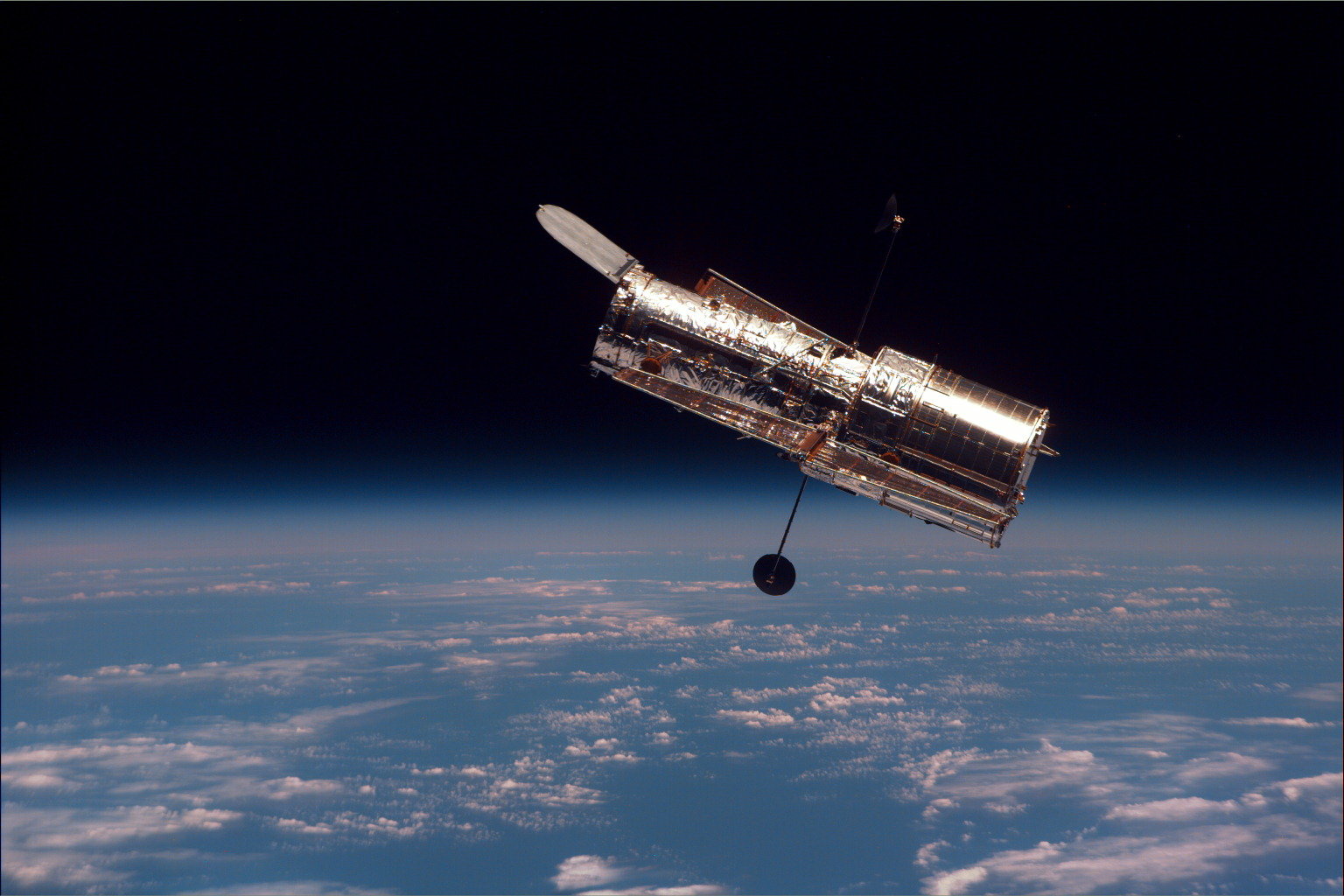Hubble Space Telescope in 'Safe Mode' After Gyroscope Failure
NASA's iconic Hubble Space Telescope is out of action for the time being.
Hubble, which has been observing the heavens since 1990, went into a protective safe mode on Friday (Oct. 5) after another one of its orientation-maintaining gyroscopes failed.
"On Friday, the Hubble Space Telescope went into safe mode due to a failed gyro — used to keep the telescope precisely pointed for long periods. Mission experts are taking steps to return Hubble to great science. More updates will follow," mission team members wrote Monday (Oct. 8) via Hubble's Twitter account. [The Hubble Space Telescope: A 25th Anniversary Photo Celebration]
The news began to trickle out on Twitter as a rumor over the weekend. Rachel Osten, Hubble's deputy mission head at the Space Telescope Science Institute (STScI) in Baltimore, confirmed that rumor with tweets of her own.
"It’s true. Very stressful weekend. Right now HST is in safe mode while we figure out what to do. Another gyro failed. First step is try to bring back the last gyro, which had been off, and is being problematic," Osten tweeted Sunday (Oct. 7).
Hubble has six gyroscopes, all of which were replaced by spacewalking astronauts during a servicing mission in May 2009. The telescope needs three working gyroscopes to "ensure optimal efficiency," mission team members have written, and the failure brings that number down to two (if the "problematic" one that had been off can't be brought back online).
But that doesn't mean it's time to panic. Hubble can do good science with two gyroscopes, or even one, astrophysicist Grant Tremblay, of the Harvard-Smithsonian Center for Astrophysics, said via Twitter Sunday.
Breaking space news, the latest updates on rocket launches, skywatching events and more!
"*IF* the third doesn't spin back up, I wouldn't be surprised if they drop to 1 gyro mode, keeping the second as reserve. @rachelosten might know, but I imagine it's a stressful, difficult decision. Let's just hope the brilliant people at @STScI can recover the third. Stress," he tweeted.
"It’s not a difficult decision, @astrogrant: the plan has always been to drop to 1-gyro mode when two remain. There isn’t much difference between 2- and 1, and it buys lots of extra observing time. Which the Astro community wants desperately," Osten tweeted in response.
"Not really scary, we knew it was coming. The gyro lasted about six months longer than we thought it would (almost pulled the plug on it back in the spring). We’ll work through the issues and be back," Osten added in another tweet.
Hubble isn't the only famous NASA robot experiencing some technical difficulties at the moment. The agency's Opportunity Mars rover hasn't made a peep since June 10, when a massive dust storm blocked so much sunlight that the solar-powered rover couldn't recharge its batteries. That storm has since abated, and Opportunity team members recently ramped up attempts to hail the six-wheeled robot, which has been exploring the Red Planet since January 2004.
Opportunity's younger, bigger cousin, Curiosity, recently switched to its backup computer after experiencing memory problems with its main brain. And the Kepler space telescope, which has discovered about 70 percent of the confirmed 3,800 exoplanets to date, is running so low on fuel that its handlers recently shut it off, to make sure it has enough propellant left to orient itself toward Earth and beam its latest data haul back to Earth next week.
NASA's Dawn spacecraft, which has been circling the dwarf planet Ceres since March 2015, is also running low on fuel. Its groundbreaking mission could end as soon as this month, Dawn team members have said.
Editor's note: This story was updated at 12:20 p.m. EDT (1620 GMT) on Oct. 8 to include the confirmation tweet from Hubble's official Twitter account.
Mike Wall's book about the search for alien life, "Out There," will be published on Nov. 13. Follow him on Twitter @michaeldwall and Google+. Follow us @Spacedotcom, Facebook or Google+. Originally published on Space.com.

Michael Wall is a Senior Space Writer with Space.com and joined the team in 2010. He primarily covers exoplanets, spaceflight and military space, but has been known to dabble in the space art beat. His book about the search for alien life, "Out There," was published on Nov. 13, 2018. Before becoming a science writer, Michael worked as a herpetologist and wildlife biologist. He has a Ph.D. in evolutionary biology from the University of Sydney, Australia, a bachelor's degree from the University of Arizona, and a graduate certificate in science writing from the University of California, Santa Cruz. To find out what his latest project is, you can follow Michael on Twitter.

